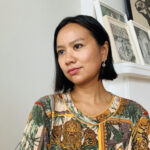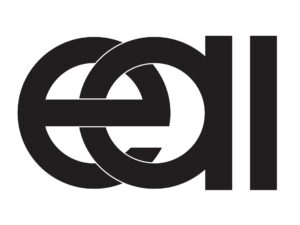At the time of the Computer Art Festivals in the 1970s, art made with computers was largely the domain of institutions. From university and private research laboratories to alternative arts organizations and galleries, institutions were necessary to steward expensive equipment, facilitate information exchange, and build context for emerging forms. In the intervening decades, computer art (now referred to as digital art) has transformed considerably alongside the rapid development of technology and digital culture, and drastic shifts in public and private funding structures. With the advent of personal computing and ostensibly decentralized distribution, the role of such institutions in producing and shaping the context of art made with computers has been questioned and reconfigured. This conversation will engage contemporary artists and institutional voices to consider the role of institutions in digital art today. Has technology made such institutions redundant, or more critical than ever? What roles might institutions play in supporting emerging digital practices, now and in the future?
 Dr. Tina Rivers Ryan is a curator of contemporary art at the Albright-Knox Art Gallery (soon to be the Buffalo AKG Art Museum) and an expert in the field of art and technology from the 1960s to the present, including digital and internet art. She has published widely on topics ranging from glitch art to virtual reality, and is particularly interested in the institutional history of digital art and the practice of curating digital art in physical spaces. Her most recent projects include essays on the rise of NFTs for Artforum and Art Review and (with Paul Vanouse) the 2021 exhibition Difference Machines: Technology and Identity in Contemporary Art, which surveyed thirty years of artworks that explore the relationship between digital tools, representation, and justice. She holds five degrees in art history, including a BA from Harvard and PhD from Columbia. Her work can be found at www.TinaRiversRyan.com
Dr. Tina Rivers Ryan is a curator of contemporary art at the Albright-Knox Art Gallery (soon to be the Buffalo AKG Art Museum) and an expert in the field of art and technology from the 1960s to the present, including digital and internet art. She has published widely on topics ranging from glitch art to virtual reality, and is particularly interested in the institutional history of digital art and the practice of curating digital art in physical spaces. Her most recent projects include essays on the rise of NFTs for Artforum and Art Review and (with Paul Vanouse) the 2021 exhibition Difference Machines: Technology and Identity in Contemporary Art, which surveyed thirty years of artworks that explore the relationship between digital tools, representation, and justice. She holds five degrees in art history, including a BA from Harvard and PhD from Columbia. Her work can be found at www.TinaRiversRyan.com
Kelani Nichole is a technologist, collector and founder of TRANSFER, an experimental gallery focused on simulation in contemporary art since 2013. In addition to founding and running a leading digital art gallery, Kelani has worked in the tech industry for 15 years with a specialty in UX and product development. In 2018 she invented a new model for distributed cultural infrastructure with The Current, a non-profit museum collection rethinking patronage and access for Time-based Media Art. Her work over the past ten years has focused on expanding an understanding of conservation and preservation through applied research and experiments with a global community of artists and institutions.
 Auriea Harvey is an artist based in Rome. She works with 3D printing, AR and physical sculptural processes to bridge the digital and physical, the possible and impossible. The work is presented as sculptures, drawings and simulations that blend digital and handmade production. Auriea is primarily concerned with mythology and storytelling through form, interaction and immersion. Her work can be found in the permanent collections of the Walker Art Center, San Francisco Museum of Modern Art, the RF.C Collection, and Rhizome’s Net Art Anthology. Her videogames and VR works have had international success, including exhibitions at the Tinguely Museum, Basel; the Victoria & Albert Museum, London; the New Museum, New York; and ZKM, Karlsruhe. Auriea is represented by bitforms gallery, NYC.
Auriea Harvey is an artist based in Rome. She works with 3D printing, AR and physical sculptural processes to bridge the digital and physical, the possible and impossible. The work is presented as sculptures, drawings and simulations that blend digital and handmade production. Auriea is primarily concerned with mythology and storytelling through form, interaction and immersion. Her work can be found in the permanent collections of the Walker Art Center, San Francisco Museum of Modern Art, the RF.C Collection, and Rhizome’s Net Art Anthology. Her videogames and VR works have had international success, including exhibitions at the Tinguely Museum, Basel; the Victoria & Albert Museum, London; the New Museum, New York; and ZKM, Karlsruhe. Auriea is represented by bitforms gallery, NYC.
 Lumi Tan is Senior Curator at The Kitchen in New York, where she has organized exhibitions and produced performances with artists across disciplines and generations since 2010. Most recently, Tan has worked with E. Jane, Baseera Khan, Autumn Knight, Efraín Rozas, Kenneth Tam and Alex Tatarsky. Previous projects include those with Kevin Beasley, Half Straddle, Sahra Motalebi, Sondra Perry, The Racial Imaginary Insitute, Danh Vo and Xiu Xiu, and Anicka Yi. Prior to The Kitchen, Tan was Guest Curator at the Fonds Régional d’Art Contemporain Nord Pas-de-Calais in France, director at Zach Feuer Gallery, and curatorial assistant at MoMA/P.S.1. Her writing has appeared in The New York Times, Artforum, Frieze, Mousse, Cura, and numerous exhibition catalogues. She was the recipient of 2020 VIA Art Fund Curatorial Fellowship.
Lumi Tan is Senior Curator at The Kitchen in New York, where she has organized exhibitions and produced performances with artists across disciplines and generations since 2010. Most recently, Tan has worked with E. Jane, Baseera Khan, Autumn Knight, Efraín Rozas, Kenneth Tam and Alex Tatarsky. Previous projects include those with Kevin Beasley, Half Straddle, Sahra Motalebi, Sondra Perry, The Racial Imaginary Insitute, Danh Vo and Xiu Xiu, and Anicka Yi. Prior to The Kitchen, Tan was Guest Curator at the Fonds Régional d’Art Contemporain Nord Pas-de-Calais in France, director at Zach Feuer Gallery, and curatorial assistant at MoMA/P.S.1. Her writing has appeared in The New York Times, Artforum, Frieze, Mousse, Cura, and numerous exhibition catalogues. She was the recipient of 2020 VIA Art Fund Curatorial Fellowship.
 Addie Wagenknecht’s work explores the tension between expression and technology. She seeks to blend conceptual work with forms of hacking and sculpture. Previous exhibitions include MuseumsQuartier Wien, Vienna, Austria; La Gaîté Lyrique, Paris, France; The Istanbul Modern; Whitechapel Gallery, London and MU, Eindhoven, Netherlands. In 2016 she collaborated with Chanel and I-D magazine as part of their Sixth Sense series and in 2017 her work was acquired by the Whitney Museum for American Art. Her work has been featured in numerous books, and magazines, such as TIME, Wall Street Journal, Vanity Fair, Art in America, and The New York Times. She holds a Masters degree from the Interactive Telecommunications Program at New York University, and has previously held fellowships at Eyebeam Art + Technology Center in New York City, Culture Lab UK, Institute HyperWerk for Postindustrial Design Basel (CH), and The Frank-Ratchye STUDIO for Creative Inquiry at Carnegie Mellon University.
Addie Wagenknecht’s work explores the tension between expression and technology. She seeks to blend conceptual work with forms of hacking and sculpture. Previous exhibitions include MuseumsQuartier Wien, Vienna, Austria; La Gaîté Lyrique, Paris, France; The Istanbul Modern; Whitechapel Gallery, London and MU, Eindhoven, Netherlands. In 2016 she collaborated with Chanel and I-D magazine as part of their Sixth Sense series and in 2017 her work was acquired by the Whitney Museum for American Art. Her work has been featured in numerous books, and magazines, such as TIME, Wall Street Journal, Vanity Fair, Art in America, and The New York Times. She holds a Masters degree from the Interactive Telecommunications Program at New York University, and has previously held fellowships at Eyebeam Art + Technology Center in New York City, Culture Lab UK, Institute HyperWerk for Postindustrial Design Basel (CH), and The Frank-Ratchye STUDIO for Creative Inquiry at Carnegie Mellon University.
 Rebecca Cleman is the executive director of Electronic Arts Intermix, a leading international resource for video and media art. EAI’s core program is the distribution and preservation of a major collection of over 4,000 new and historical media works by artists, ranging from seminal videos by pioneering figures, such as Nam June Paik, Ulysses Jenkins, and Joan Jonas, to new digital works by Maggie Lee and Frank Heath.
Rebecca Cleman is the executive director of Electronic Arts Intermix, a leading international resource for video and media art. EAI’s core program is the distribution and preservation of a major collection of over 4,000 new and historical media works by artists, ranging from seminal videos by pioneering figures, such as Nam June Paik, Ulysses Jenkins, and Joan Jonas, to new digital works by Maggie Lee and Frank Heath.
Image Credit: Installation shot of Addie Wagenknecht, XXXX.XXX, 2014, photograph by John Berens
The event is organized by Helena Shaskevich, Ph.D. Candidate at the CUNY Graduate Center’s Art History Department. 



